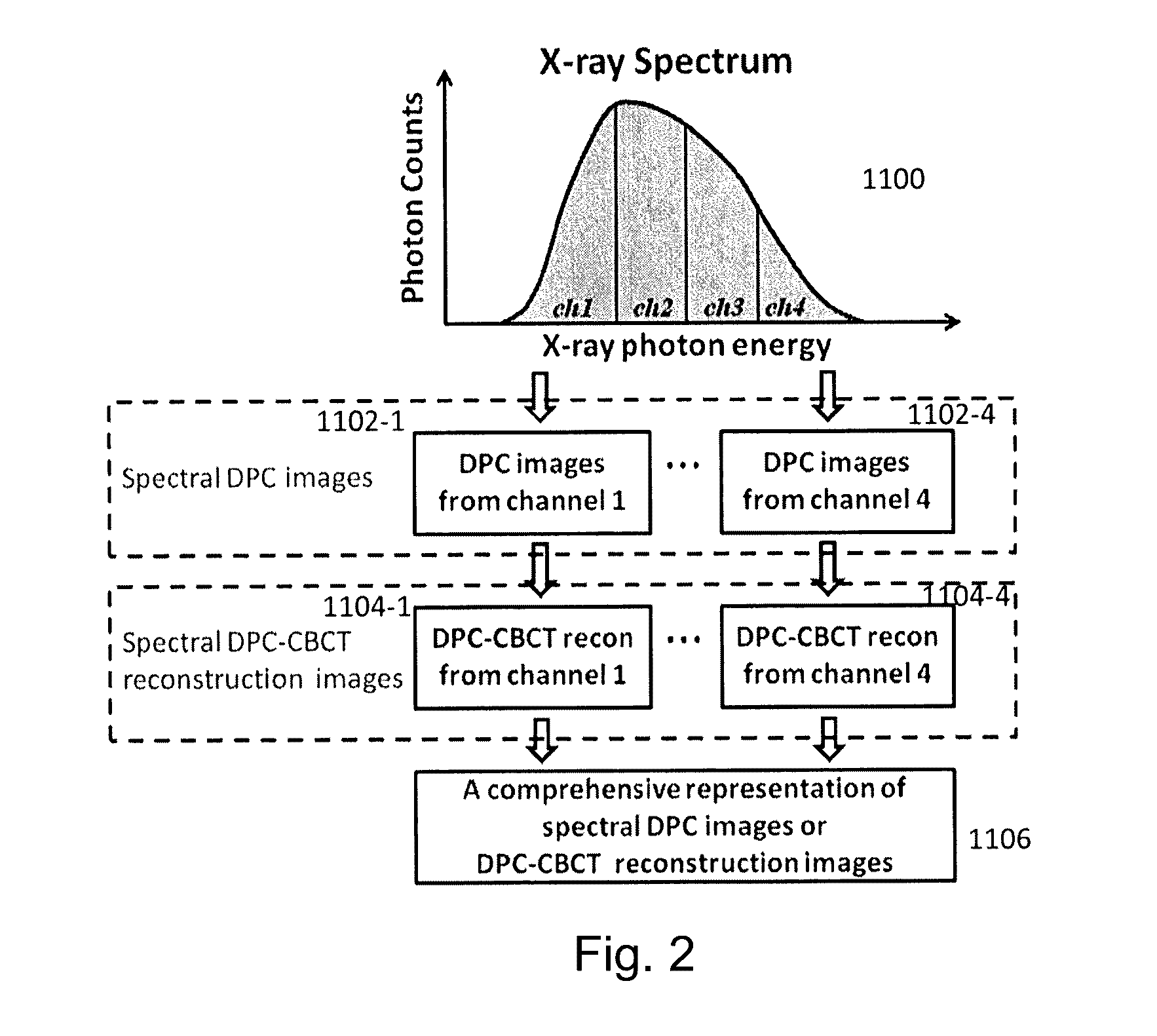Method and apparatus of spectral differential phase-contrast cone-beam ct and hybrid cone-beam ct
a phase-contrast cone and phase-contrast technology, applied in image enhancement, instruments, applications, etc., can solve the problems of relatively low sensitivity of mammography to small breast cancer (under several millimeters), sharp decline in the probability of metastasis, and limited specificity and positive predictive value of mammography. achieve the effect of increasing spatial resolution
- Summary
- Abstract
- Description
- Claims
- Application Information
AI Technical Summary
Benefits of technology
Problems solved by technology
Method used
Image
Examples
Embodiment Construction
[0045]Preferred embodiments will be set forth in detail with reference to the drawings, in which like reference numerals refer to like elements or steps throughout.
[0046]Since the grating-based differential phase contrast (DPC) imaging technique using a hospital-grade x-ray tube was proposed in 2006, researchers have been quickly following up because DPC showed great potential for higher object contrast, which leads to the potential of much higher spatial resolution and dose efficiency than attenuation-based x-ray imaging. However, according to published papers, DPC imaging using a hospital-grade x-ray tube has not yet demonstrated a higher contrast resolution or better dose efficiency as expected than the attenuation-based imaging.
[0047]We have developed the DPC technology into DPC-based cone beam CT (DPC-CBCT) technology to provide three-dimensional phase coefficient of an object. According to our preliminary results, the major reason for the unexpected high dose is the polychroma...
PUM
 Login to View More
Login to View More Abstract
Description
Claims
Application Information
 Login to View More
Login to View More - R&D
- Intellectual Property
- Life Sciences
- Materials
- Tech Scout
- Unparalleled Data Quality
- Higher Quality Content
- 60% Fewer Hallucinations
Browse by: Latest US Patents, China's latest patents, Technical Efficacy Thesaurus, Application Domain, Technology Topic, Popular Technical Reports.
© 2025 PatSnap. All rights reserved.Legal|Privacy policy|Modern Slavery Act Transparency Statement|Sitemap|About US| Contact US: help@patsnap.com



